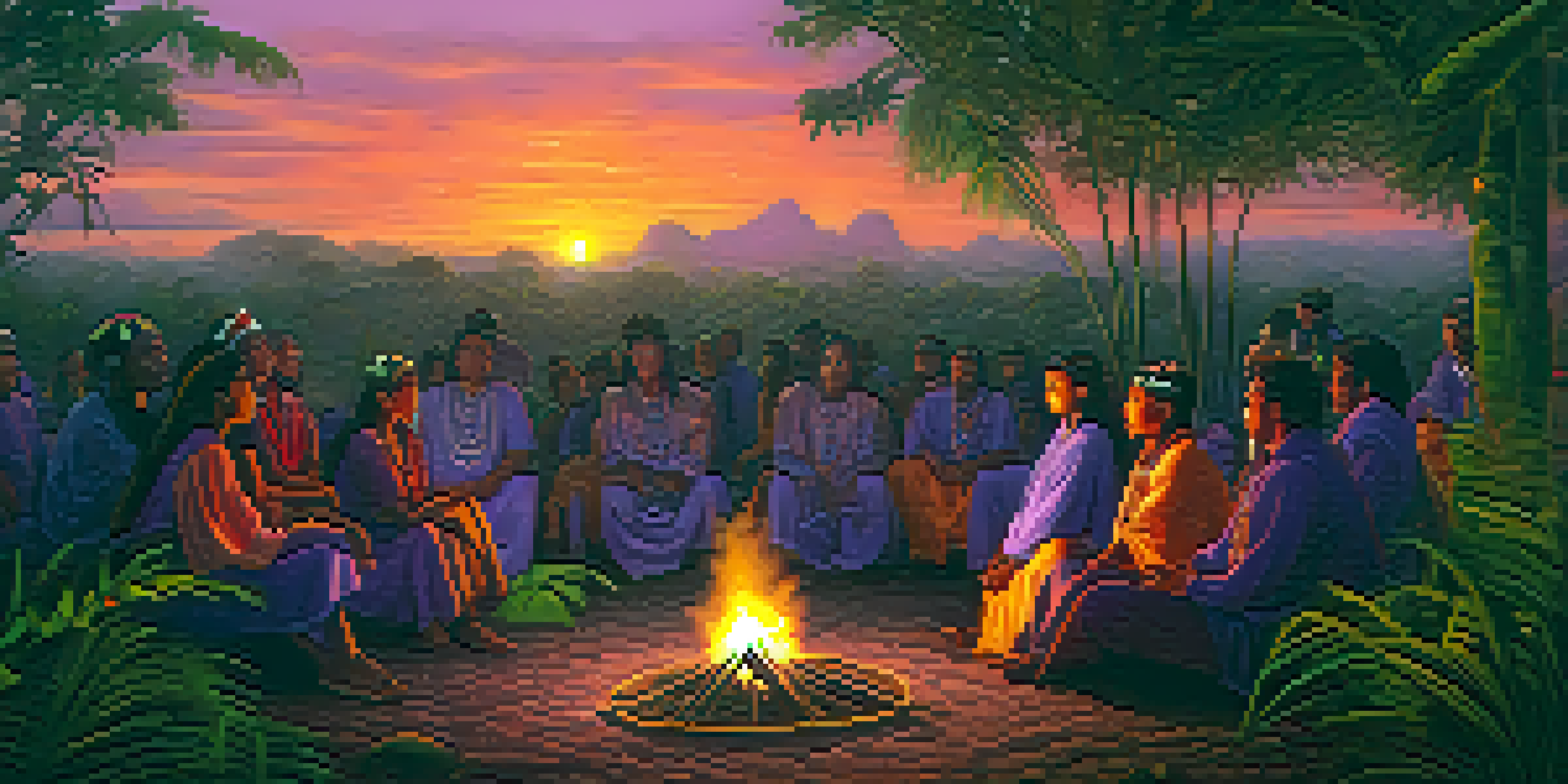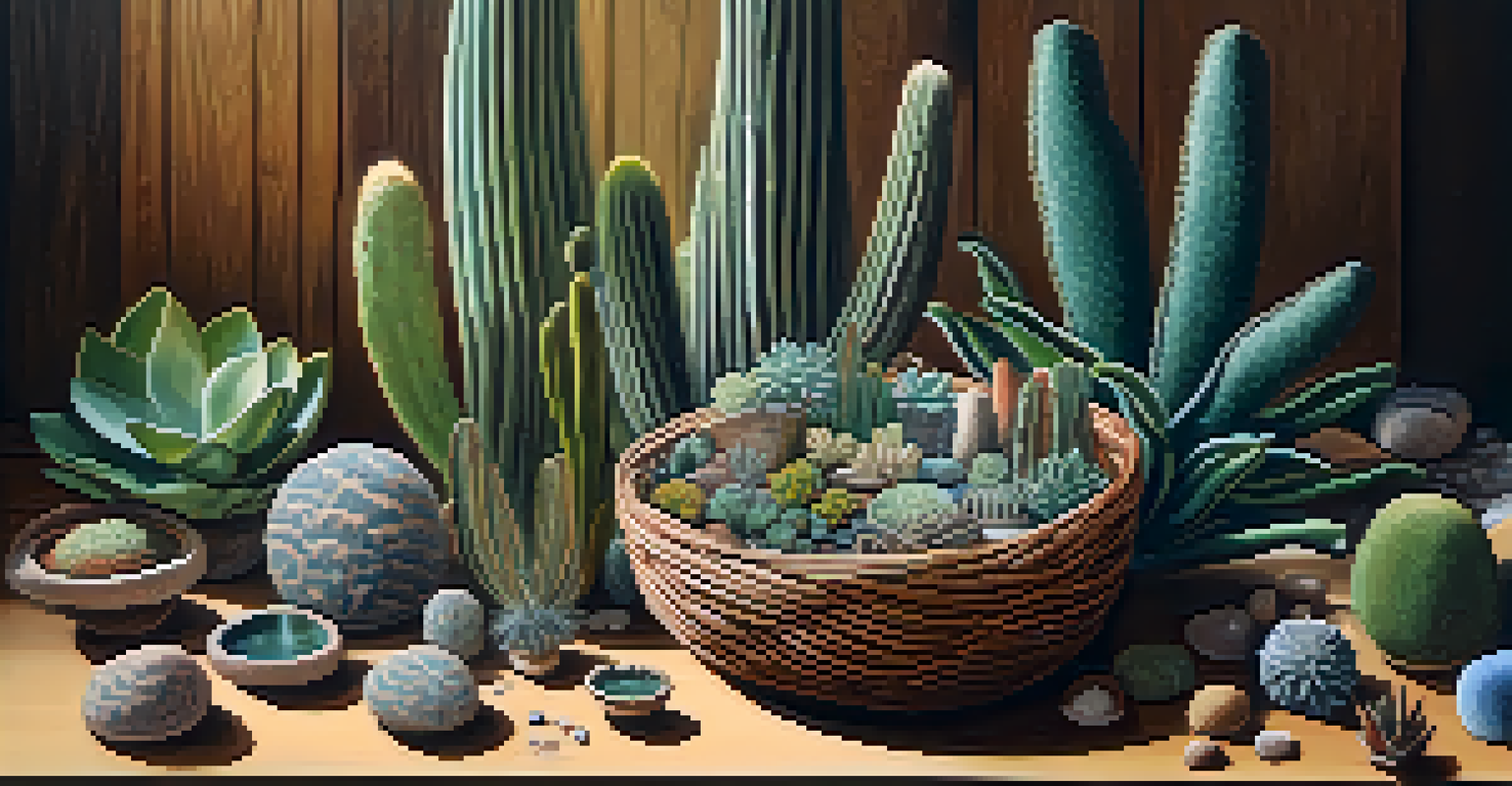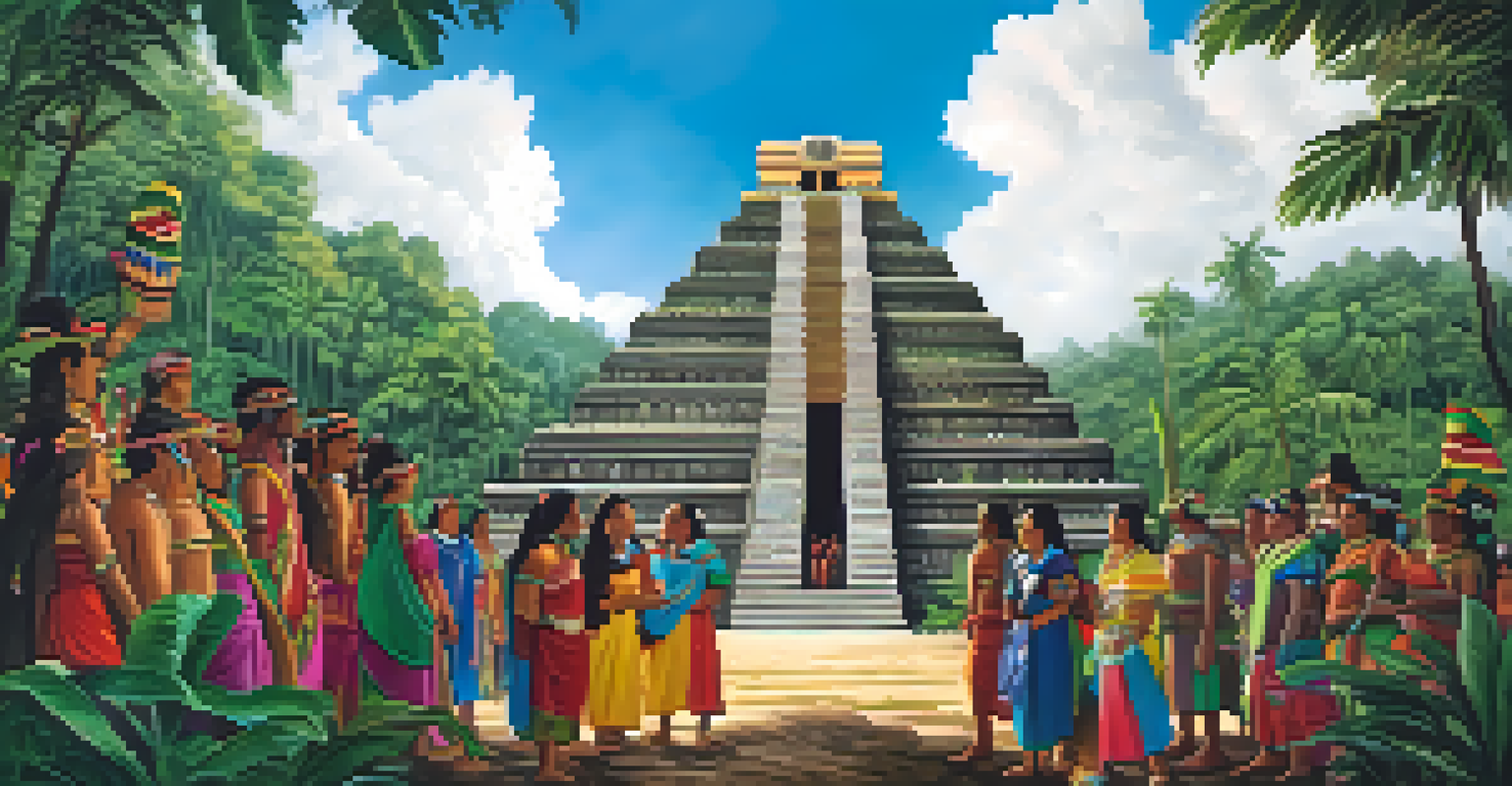Entheogens in the Teachings of Ancient Indigenous Tribes

Understanding Entheogens and Their Cultural Significance
Entheogens are substances, often derived from plants, that induce altered states of consciousness, primarily for spiritual purposes. Indigenous tribes across the globe have utilized these substances for centuries, viewing them as sacred tools for connecting with the divine or the spirit world. This relationship with entheogens is deeply rooted in their cultural practices and is often intertwined with their beliefs about life, death, and the cosmos.
The use of entheogens is a way of exploring the deepest parts of our minds and souls, a bridge to the divine.
For many tribes, these substances are not just recreational; they play a critical role in rituals and ceremonies. For instance, the use of peyote by Native American tribes in the United States is a prime example of how these substances are integrated into spiritual practices. The experience is often seen as a way to gain insight, healing, or guidance from a higher power.
Moreover, the historical significance of entheogens can be traced back to ancient texts and archaeological findings, which suggest that these practices have been part of human culture for millennia. This enduring relationship highlights the importance of entheogens in fostering community bonds, personal introspection, and cultural identity among indigenous peoples.
Entheogenic Practices Among Mesoamerican Cultures
Mesoamerican cultures, particularly the Aztecs and Maya, have a rich history of using entheogens in their spiritual practices. They often utilized substances like psilocybin mushrooms and peyote during sacred rituals, believing these experiences could lead to communication with the gods. This practice was not taken lightly; it was carefully guided by shamans or spiritual leaders who facilitated the experience, ensuring it was respectful and purposeful.

For the Aztecs, the mushroom ceremonies were intertwined with their agricultural cycles, often coinciding with planting and harvesting festivals. They believed that consuming these mushrooms allowed them to receive divine messages essential for their survival and prosperity. Such practices demonstrate how entheogens were integral to their worldview, shaping their understanding of nature and their place within it.
Entheogens in Cultural Traditions
Entheogens play a crucial role in the spiritual practices of indigenous cultures, serving as sacred tools for connection with the divine.
Similarly, the Maya used entheogens in their rites to promote healing and divination. The reverence for these substances underscores a profound respect for the natural world and the interconnectedness of all living beings. By engaging with these plants, the Maya sought to transcend the ordinary, accessing deeper truths and insights that guided their daily lives.
The Role of Ayahuasca in Amazonian Tribes
In the Amazon basin, ayahuasca has played a pivotal role in the spiritual practices of various indigenous tribes, such as the Shipibo and the Ashaninka. This potent brew, made from the Banisteriopsis caapi vine and other plants, is consumed during ceremonies led by experienced shamans. The experience often lasts several hours, during which participants may encounter visions and profound insights.
Plants are our teachers, and we must listen to their wisdom if we are to heal ourselves and the world.
For these tribes, ayahuasca is more than a hallucinogen; it is a sacred medicine believed to facilitate healing and personal growth. Participants often report insights into their lives and relationships, which can lead to transformative changes. The ceremonial context provides a safe space for individuals to explore their inner worlds, fostering community support and understanding.
Additionally, ayahuasca ceremonies are often seen as a way to connect with ancestors and the spiritual realm. The shamans interpret the visions, acting as guides to help participants navigate their experiences. This deep-rooted tradition highlights the importance of ritual and the collective experience, reinforcing bonds within the community and promoting a shared understanding of the cosmos.
Rituals and Ceremonies: Structuring the Experience
Rituals surrounding the use of entheogens are crucial in shaping the experiences of participants. These ceremonies are often steeped in tradition, with specific songs, chants, and practices that set the tone for the journey ahead. This structured approach helps create an environment conducive to spiritual exploration, allowing participants to feel safe and supported.
For example, many tribes incorporate purification practices, such as fasting or cleansing, before the ceremony. This preparation is believed to enhance the efficacy of the entheogen and prepare the mind and body for the experience. By establishing these protocols, tribes honor the sacredness of the substances and the journey they facilitate.
Challenges Facing Indigenous Practices
Modern interest in entheogens presents challenges for indigenous tribes, risking the authenticity of their rituals and cultural practices.
Moreover, the communal aspect of these ceremonies fosters a sense of belonging and shared purpose. Participants often come together, sharing their intentions and experiences, which can lead to collective healing and understanding. This emphasis on community underscores the idea that spiritual journeys are not undertaken in isolation but are deeply interconnected with the lives of others.
Contemporary Indigenous Practices and Challenges
As the modern world encroaches on traditional practices, many indigenous tribes face significant challenges in preserving their entheogenic rituals. Global interest in these substances has led to an influx of outsiders seeking experiences without understanding their cultural significance. This commodification can dilute the spiritual essence of these practices, leading to a loss of authenticity.
Additionally, the legal status of entheogens varies widely across countries, complicating the ability of indigenous tribes to practice their traditions freely. In some regions, legal restrictions can hinder access to sacred plants, while in others, exploitative practices can arise, putting indigenous rights at risk. This complex landscape raises important questions about cultural appropriation and the ethical responsibilities of those engaging with entheogenic practices.
Despite these challenges, many indigenous communities are actively working to protect their traditions and ensure that their knowledge is respected and preserved. Through education and advocacy, they aim to raise awareness about the importance of these practices, both for their own cultural identity and for the broader conversation about spirituality and consciousness.
The Science Behind Entheogens: Bridging Tradition and Modernity
In recent years, scientific research has begun to explore the effects of entheogens on the human brain and consciousness. Studies on substances like psilocybin and ayahuasca have shed light on their potential therapeutic benefits, particularly in treating mental health conditions such as depression and PTSD. This growing body of evidence is prompting a reevaluation of these substances within both medical and spiritual contexts.
The intersection of traditional knowledge and modern science presents a fascinating opportunity for collaboration. Indigenous practices can provide invaluable insights into the safe and respectful use of these substances, while scientific research can help validate and understand their effects. This synergy could lead to a more holistic approach to healing, merging ancient wisdom with contemporary medical practices.
Science Meets Ancient Wisdom
Recent scientific research is exploring the therapeutic benefits of entheogens, highlighting the potential for collaboration between traditional practices and modern medicine.
However, it’s crucial to approach this integration with care. Respecting the cultural significance of entheogens and the knowledge of indigenous peoples should be at the forefront of any scientific inquiry. By prioritizing ethical considerations, we can honor the traditions that have safeguarded these practices for generations while exploring their potential benefits in today's world.
Conclusion: The Enduring Legacy of Entheogens
The teachings of ancient indigenous tribes regarding entheogens underscore a profound understanding of the human experience and the quest for connection. These substances, viewed as sacred, are deeply woven into the fabric of community life, spirituality, and healing. Their use reflects a rich tapestry of beliefs that continue to inspire and inform contemporary practices.
As we navigate the complexities of modern society, the lessons from these traditions remind us of the importance of mindfulness, respect, and interconnectedness. The rituals surrounding entheogens invite us to explore our inner worlds and foster deeper connections with ourselves and others. In a fast-paced world, this is a powerful reminder of the value of slowing down and reflecting on our place within the broader tapestry of life.

Ultimately, as interest in entheogens continues to grow, it is essential to approach these practices with reverence and understanding. By honoring the legacy of ancient indigenous teachings, we can foster a more meaningful relationship with these substances, enriching our spiritual journeys and promoting healing for individuals and communities alike.